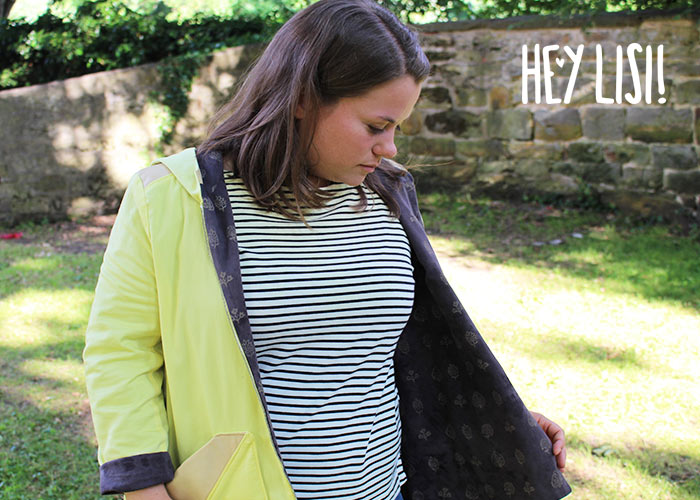Looking for the natural way
Hello! My name is Lisa and I have been fond of sewing since my childhood. For some time now, I am sewing a lot of the clothes for me and my family myself and show them on my facebook page (Hey Lisi). For me sewing is a sensible way to make sure that humans and nature do not suffer from what I wear on the skin. So I mainly buy GOTS certified organic fabrics or recycle what we no longer wear. Because I like experimenting and designing myself, I went on the search for natural textile inks some time ago, and I came across the WEJA-Plant dye kits and the TOGIS-Textile printing ink offered by LIVOS. These fabric inks are incredibly impressive and deliver great, strong dyeing results on cotton and other natural fibers.
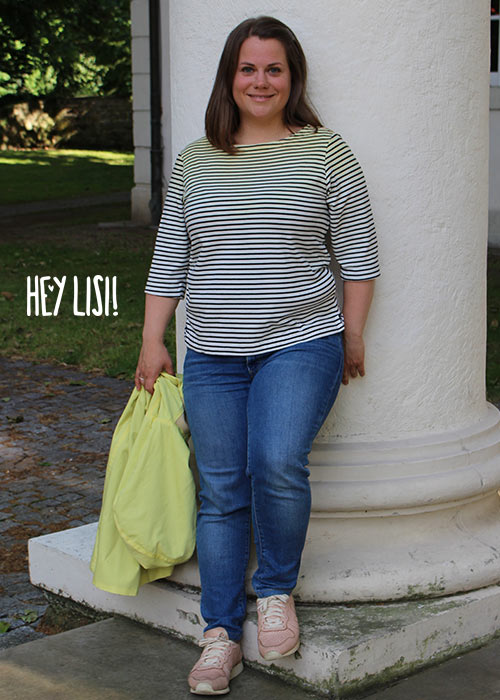
For this guest commentary, I dyed and printed on fabrics for a light jacket and a jersey shirt. Now I would like to show you the different possibilities of coloring that I have used. The WEJA-Plant dye kits are suitable for both, for dyeing in the washing machine as well as for dyeing in a pot. Both versions I wanted to test and compare.
My approach
For my jacket, I have dyed a fine white twill with the WEJA-Plant dye kit in mignonette yellow and a natural cotton satin with the WEJA-Plant dye kit in anthracite. In addition, I have dyed a zipper with cotton ribbon and a cotton piping in yellow, too. The fact that other "sewing accessories" can be dyed tone in tone is a great advantage of the dyeing. I have set accents with natural rhubarb leather, a purely vegetable tanned leather. I then printed the anthracite-colored inner jacket with a mixture of TOGIS white opaque and golden corn.
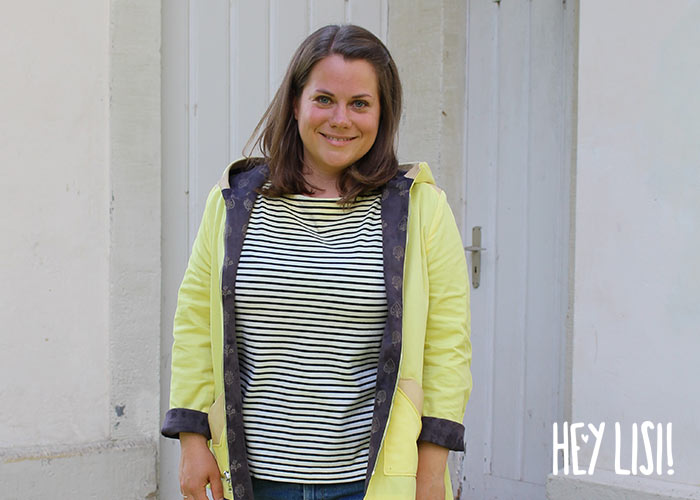
I sewed the Breton shirt from a 5% spandex cotton jersey and then dyed it with the WEJA-Plant dye kit in mignonette yellow. The so-called "dip-dyeing" is a technique, which I wanted to try for a long time. When applied on finished clothes, it gives particularly fascinating results. This dyeing technique is, of course, also very exciting, since it is not possible to predict 100% what the result will look like. By the way: The low proportion of elastane in the fabric has not had any negative effect on the coloration.
Shopping lists
For the yellow outer jacket I needed the following material:
- WEJA-Plant dye kit, mignonette yellow, 250 g
- 2m twill, white, GOTS certified
- 1 zipper with cotton band
- 1m cotton piping
- some rhubarb leather
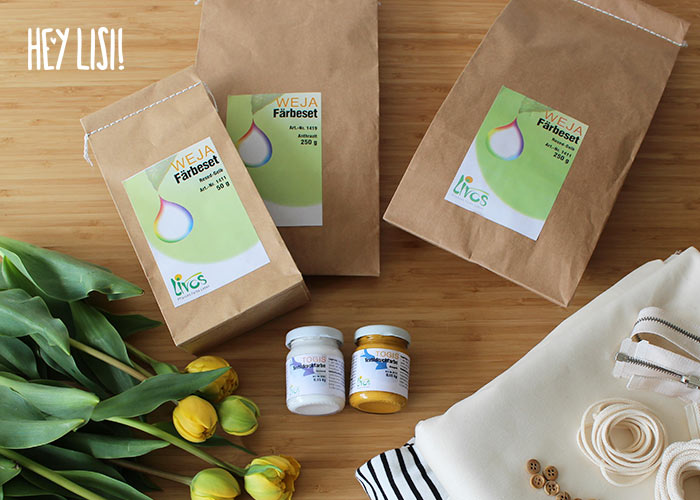
For the anthracite colored printed inner jacket I needed these materials:
- WEJA-Plant dye kit, anthracite, 250 g
- TOGIS-Textile printing ink, white opaque
- TOGIS-Textile printing ink, golden corn
- 2m natural cotton satin
- Indian wooden stamps, sponge, tailor's chalk, ruler
And for the Breton shirt I needed:
- WEJA-Plant dye kit, mignonette yellow, 50 g
- 1.25m striped jersey
- 4 olive wood buttons
The work steps – yellow outer jacket
In case of the yellow outer jacket I decided for the more uncomplicated dyeing method and put the white twill together with the zipper and the piping into the washing machine. The dyeing takes place in two steps. First, the materials are prepared for dyeing with the bag n° 1 at 98 ° C. In a second step they are dyed with bag n° 2. The content of this bag consist exclusively of crushed plant fibers and I was really very skeptical about what the coloring result would look like. In addition, our washing machine has a tinted window and I could not see during the dyeing process what was happening in there. All the bigger was my surprise and joy when the wash program was finished and I took out this wonderfully bright yellow fabric from the washing machine. By the way: Discolorations at the rubber coatings of the washing machine, I could easily eliminate by wiping them off with a wet cloth and some washing-up liquid.
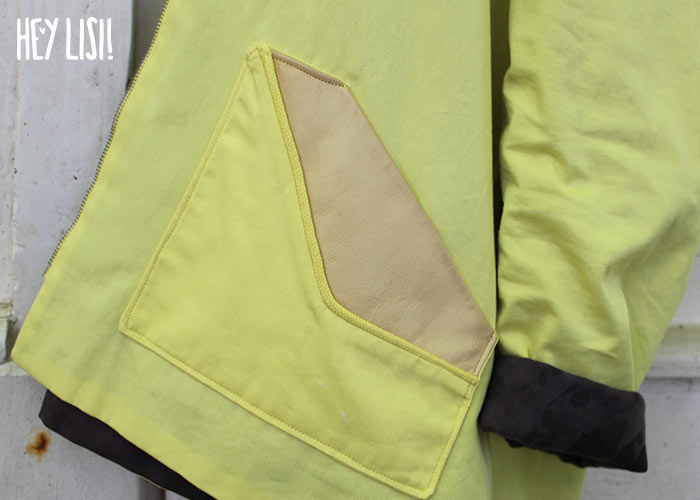
Anthracite inner jacket
The fabric of the inner jacket I wanted to color a little less uniformly. In my childhood in the 1980s, my mother sewed and tie-dyed old cotton sheets for us to play with. Today, her grandchildren are playing with them, because they are still beautiful. For this she crumpled up the cloths, laid them in a bucket full of coloring material and not moved them during the whole dyeing process. I used the same procedure for the dyeing of the cotton satin, with the difference that I dyed them in a pot on the hearth to keep the temperature constant at about 98 ° C. Also in this case two passages are necessary for the fabric to be prepared for coloring. After the fabric was dyed, washed and dried, I printed it. For this I bought Indian wooden stamps in a small shop in our old town, whose motifs, as I find, fit so wonderfully to the natural plant colors. I mixed the TOGIS-Textile printing inks to make them visible on the dark fabric. Then I dipped a sponge into the ink and used it as a stamp pad for the wooden stamps. With help of a ruler and tailor's chalk I drew lines on the fabric and then printed my personal interpretation of plant colors.
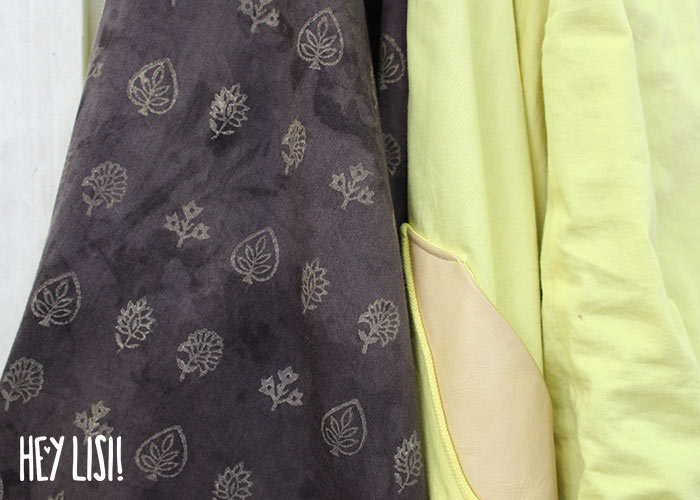
The Breton shirt
In case of the Breton shirt, I first sewed it and then dyed it. In order to determine where the yellow color should end, I marked a line on the shirt with wonderclips while wearing it and then stitched it with big stitches with stitching yarn. Then I pulled the thread together and fixed it. The lower part of the shirt I tied with a rubber band on a small board. The staining took place in a pot. After the preliminary first pass to prepare the textile for dyeing, I prepared a dyeing liquid and then removed the dyeing bag. I put the little board with the shirt on the edge of the pot. The rest of the shirt was immersed into the liquid. I dyed it for about 30 minutes. Tip: If you dye visible seams, you should either sew them with cotton sewing thread or already in the desired color. I have sewn the neckline and button strip with yellow yarn. The buttons I have sewn after the dyeing.
A good feeling
I am very happy with my new ensemble for cooler days in the summer or for a trip to the sea. The colors have become incredibly beautiful and every step of the project has been easily implemented. Furthermore, the good feeling of wearing nothing but natural materials on the skin! I am in any case in the "dye fever" and already have an idea for the next project!
For this article the WEJA-Plant dye kits and the TOGIS-Textile printing ink were kindly provided by LIVOS.
Cut pattern jacket: „Mein Wind&Wetter Parka“ by Lotte&Ludwig Cut pattern Breton shirt: "TimpeTee" by Schneidernmeistern Shopinfo: white-black striped jersey by Stoffonkel All other fabrics and materials from Biostoffe.at Author: Lisa Bosse


